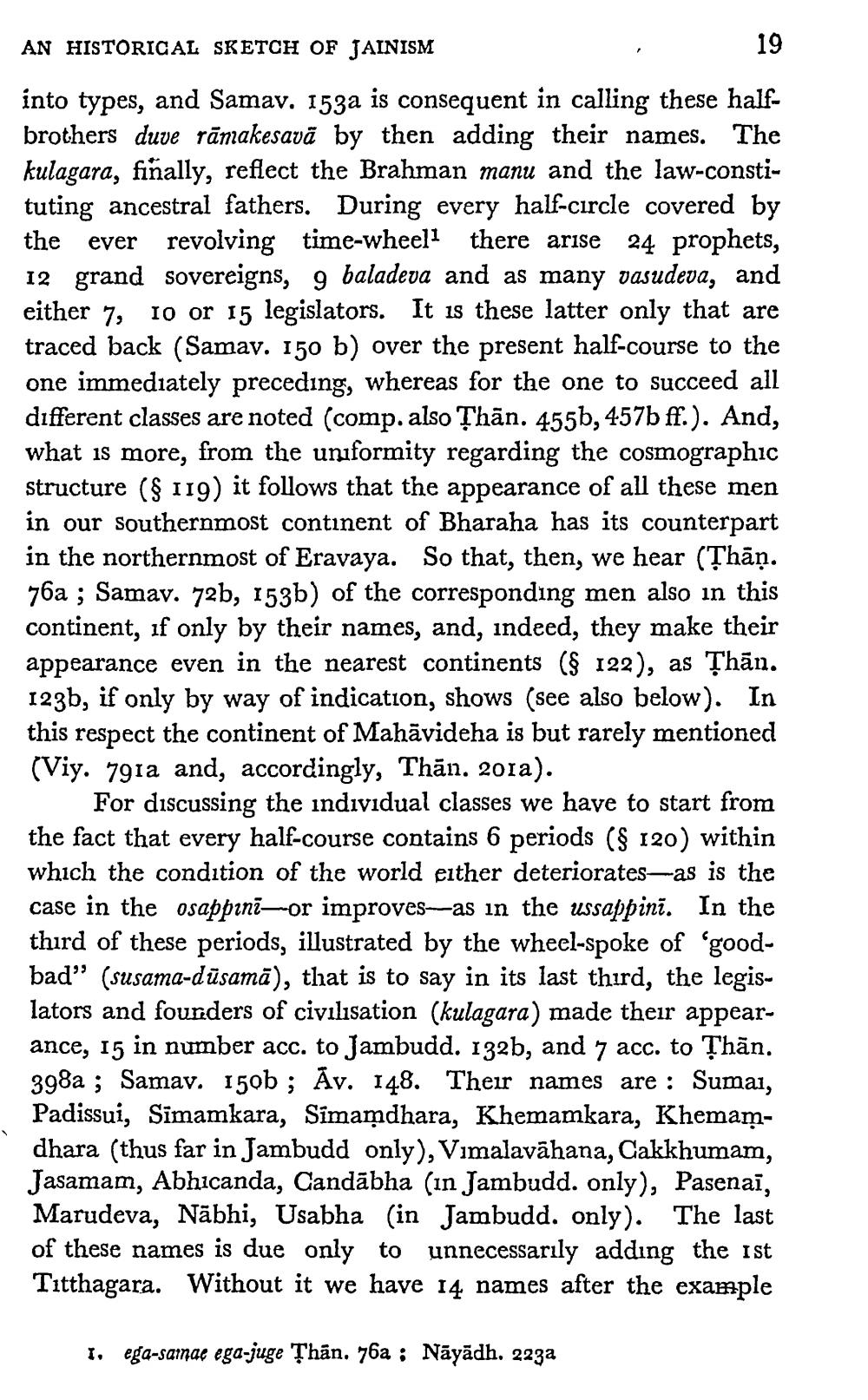________________
19
AN HISTORICAL SKETCH OF JAINISM
into types, and Samav. 153a is consequent in calling these halfbrothers duve rāmakesavā by then adding their names. The kulagara, finally, reflect the Brahman manu and the law-constituting ancestral fathers. During every half-circle covered by the ever revolving time-wheel1 there arise 24 prophets, 12 grand sovereigns, 9 baladeva and as many vasudeva, and either 7, 10 or 15 legislators. It is these latter only that are traced back (Samav. 150 b) over the present half-course to the one immediately preceding, whereas for the one to succeed all different classes are noted (comp. also Than. 455b, 457b ff.). And, what is more, from the uniformity regarding the cosmographic structure (§ 119) it follows that the appearance of all these men in our southernmost continent of Bharaha has its counterpart in the northernmost of Eravaya. So that, then, we hear (Thāṇ. 76a; Samav. 72b, 153b) of the corresponding men also in this continent, if only by their names, and, indeed, they make their appearance even in the nearest continents (§ 122), as Than. 123b, if only by way of indication, shows (see also below). In this respect the continent of Mahāvideha is but rarely mentioned (Viy. 791a and, accordingly, Thān. 2012).
For discussing the individual classes we have to start from the fact that every half-course contains 6 periods (§ 120) within which the condition of the world either deteriorates-as is the case in the osappini—or improves-as in the ussappini. In the third of these periods, illustrated by the wheel-spoke of 'goodbad" (susama-dūsamā), that is to say in its last third, the legislators and founders of civilisation (kulagara) made their appearance, 15 in number acc. to Jambudd. 132b, and 7 acc. to Thãn. 398a; Samav. 150b; Av. 148. Their names are: Sumai, Padissui, Simamkara, Simamdhara, Khemamkara, Khemamdhara (thus far in Jambudd only), Vimalavahana, Cakkhumam, Jasamam, Abhicanda, Candabha (in Jambudd. only), Pasenai, Marudeva, Nãbhi, Usabha (in Jambudd. only). The last of these names is due only to unnecessarily adding the 1st Titthagara. Without it we have 14 names after the example
I. ega-samae ega-juge Thân. 76a : Nāyādh. 223a




